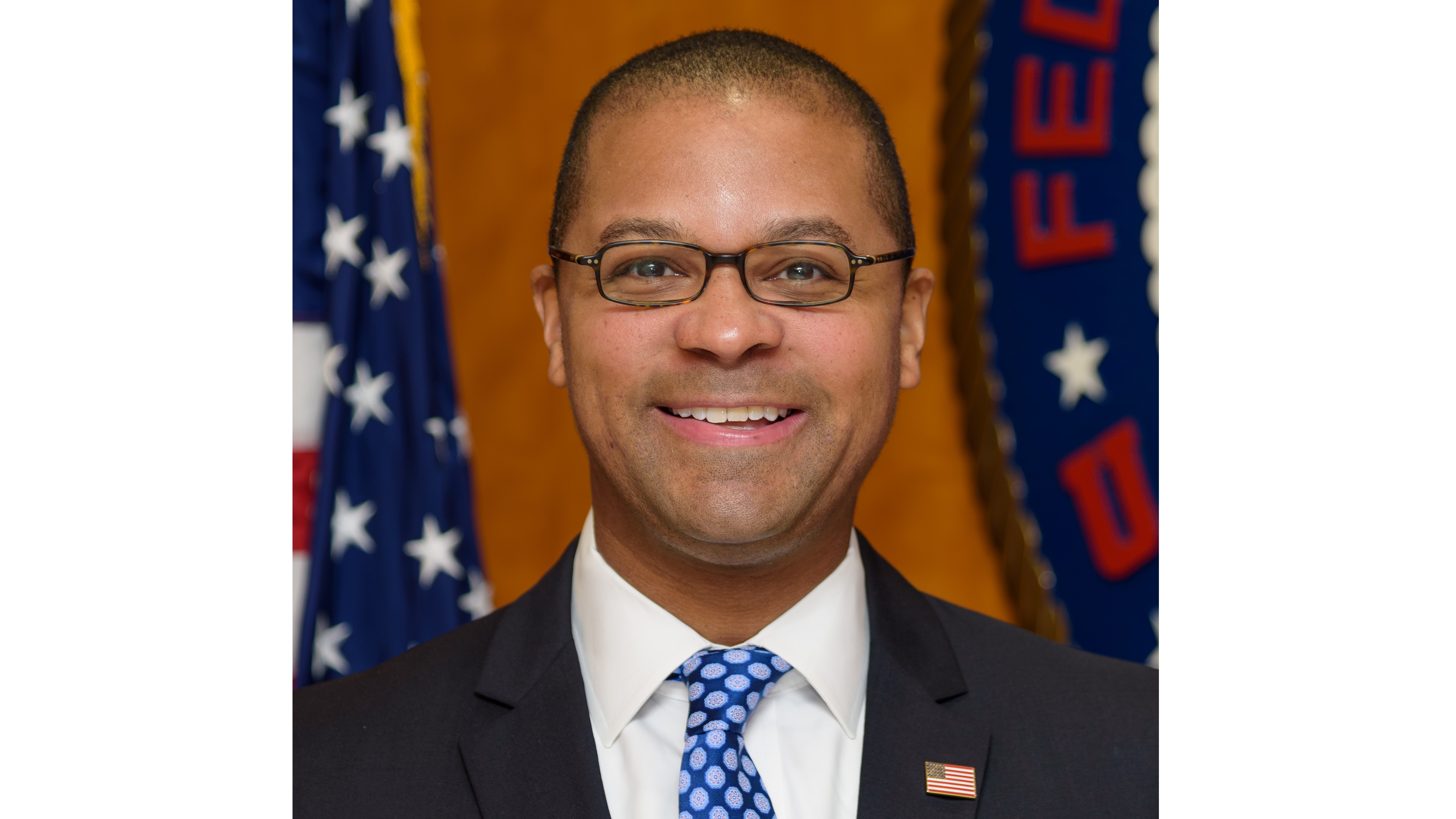Broadband Access, Media Consolidation and Diversity Top of Mind for FCC Commissioner Starks
Commissioner hails broadcast localism, independence

WASHINGTON—Broadband access, media consolidation and diversity within the broadcast workforce are on the list of priorities for FCC Commissioner Geoffrey Starks, who outlined his plans in an address to the Media Institute this week.
Top of the list is improving access to broadband, particularly in light of the pandemic, which closed schools, forcing students to learn from home. Declaring access to the internet a civil right, Starks noted that tens of millions of U.S. families still lack access to high speed broadband, adding that the majority of those families are headed by people of color.
“Black people and other people of color in America are still, by a wide margin, significantly less likely to have a home broadband connection than their white counterparts,” Starks said. “An essential piece of our broadband deployment challenge is creating digital equity by bridging the digital divide and the opportunity divide.”
Starks cited recent legislation designed to address the divide including the American Rescue Plan Act of 2021, which created a $7.17 billion Emergency Connectivity Fund and the FCC’s vote this week to provide funding to eligible schools and libraries to purchase eligible equipment and services for use at locations other than a school or library. In addition, President Biden’s proposed $2.3 trillion infrastructure package, aka the “American Jobs Plan,” targets $100 billion dollars to connect every American to high-speed broadband.
Starks also noted that along with promoting policies that increase access to broadband, local TV and radio are also an important source of news and information (and among the most trusted), particularly during the past year, but that their survival is being threatened by media conglomerates more interested in the bottom line than in serving their local communities.
“Localism is one of the pillars that guides the FCC’s regulation of broadcasting, and now more than ever local TV stations must rise to the challenge of continuing to serve local audiences while at the same time navigating the evolving media landscape and managing the evolving needs of their diverse populations of consumers,” Starks told the Media Institute.
Improving diversity in media ownership and employment is also on the commissioner’s to-do list as well.
Get the TV Tech Newsletter
The professional video industry's #1 source for news, trends and product and tech information. Sign up below.
“The FCC must make sure that every aspect of this industry—from who owns the license to who makes decisions in the production room to who sits in front of the camera—reflects our diversity, he said. “Why is diversity so important? Because what we see and hear, and who we see and hear it from, impacts the way we view our world, our society and ourselves.”
Citing the recent U.S. Supreme Court “Prometheus Radio Project” case, in with the court found that the FCC’s relaxation of media ownership rules was appropriate, Starks said that while the court did agree that the rules at stake—designed to promote competition, localism and diversity—were no longer necessary to serve the agency’s public interest goals, and that the rule changes were not likely to harm minority and female ownership, “nothing in the decision disturbed our long-established ruling that the Commission can take into account how diversity will be affected by our media ownership decisions.
“That’s a big win for agency deference under the Administrative Procedure Act that should provide the necessary space to revisit our rules with diversity front and center as a consideration,” Starks said.
Starks also reiterated his support for a commission inquiry to restart the EEO data collection.
“I welcome the debate over whether there are any valid outstanding concerns—constitutional or otherwise—about how to proceed with fulfilling our statutory obligations here and ensure the promotion of diversity in broadcasting,” he said. “This inquiry is long overdue, and I hope we can move the proceeding forward in short order.”
Finally, Starks reminded the audience about another FCC inquiry on updating the Twenty-First Century Communications and Video Accessibility Act of 2010 (CVAA), which is designed to help “ensure that individuals with disabilities are able to fully utilize communications services and equipment and better access video programming.” The updates focus on closed captioning, emergency information and improved user interfaces for individuals with disabilities.
“The Commission recently adopted rules to extend requirements for broadcasters and other video service providers to provide audio description for programming in 40 additional marketing areas over the next four years,” Starks said. “I look forward to developing a record on this important opportunity to update these regulations to ensure that everyone can fully and equally participate in the digital revolution.”
Tom has covered the broadcast technology market for the past 25 years, including three years handling member communications for the National Association of Broadcasters followed by a year as editor of Video Technology News and DTV Business executive newsletters for Phillips Publishing. In 1999 he launched digitalbroadcasting.com for internet B2B portal Verticalnet. He is also a charter member of the CTA's Academy of Digital TV Pioneers. Since 2001, he has been editor-in-chief of TV Tech (www.tvtech.com), the leading source of news and information on broadcast and related media technology and is a frequent contributor and moderator to the brand’s Tech Leadership events.

